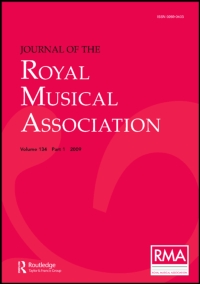No CrossRef data available.
Article contents
Extract
The title of my paper refers specially to the Coronation services in Westminster Abbey, but a word or two may be said about the Coronation pageants connected with the passages of three sovereigns through the City of London: Elizabeth, James I., and Charles II. It was on Saturday, January 14, 1558, “about two of the clocke at afternoone,” that Good Queen Bess marched from the Tower to proceed to Westminster. On a scaffold near Fanchurch stood a “noyes of instruments”; and at Gracious Streate (now Gracechurch Street) we also read of “loude noyses of musicke.” A noise, I may remind you, in those days merely meant sound or band. In Shakespeare's “King Henry IV.” we read, “See if thou canst find out Sneak's noise,” i.e., his street-band; and in “Macbeth,” when in the Witches' scene, at the commencement of Act IV., King Duncan's General says, “Why sinks that cauldron ? and what noise is this ?” there is the indication “Hautboys.” And of this very progress of Queen Bess we read how, at the porch of St. Peter's, in Cheapside, or “Cheape “as it was called, “The waites of the Citie gave a pleasant noyse with their instrumentes as the Queene's Majestie did passe by “; also of a “noyse of singing children.”
- Type
- Research Article
- Information
- Copyright
- Copyright © Royal Musical Association, 1901


